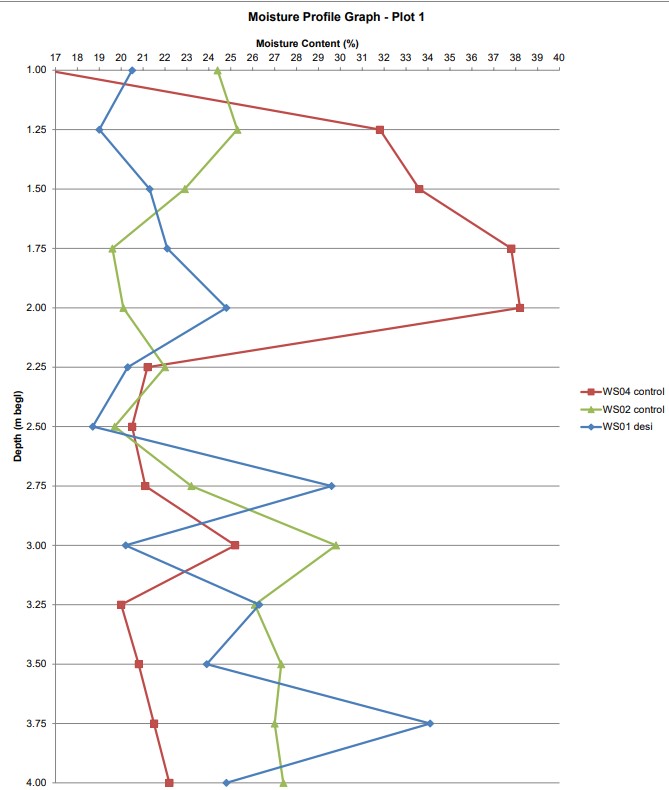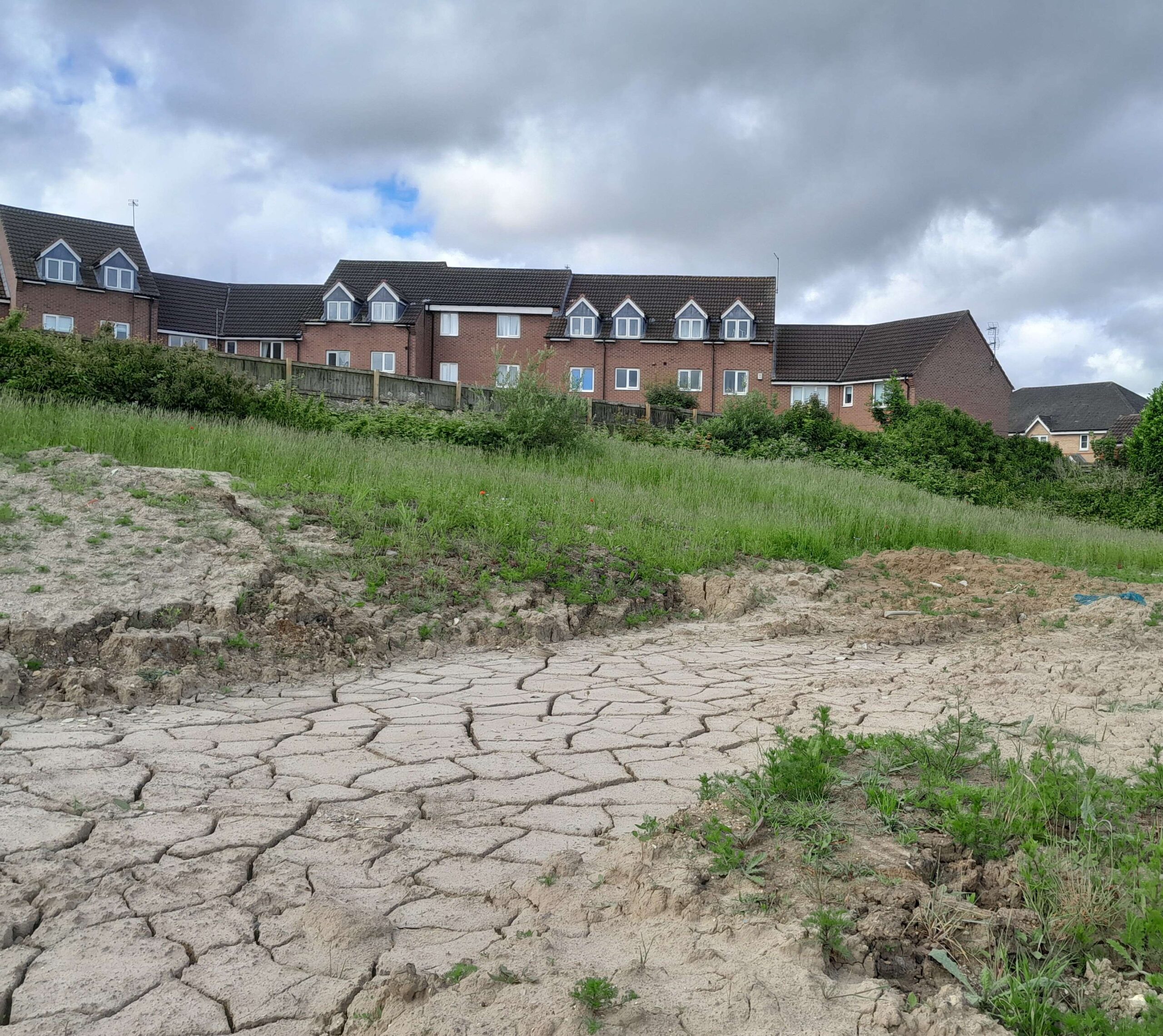Soil desiccation testing is a crucial process where development foundations are near previous or existing trees, particularly in regions prone to seasonal changes in soil moisture levels. This testing determines the extent to which soil has dried out, or desiccated, which can significantly impact the stability and structure of buildings.
Soil moisture content is a critical factor in understanding the behaviour of clay soils, which can shrink or swell depending on the moisture level. These changes can lead to structural issues in buildings (subsidence or heave). Desiccation testing helps identify these risks early, allowing for the implementation of measures to mitigate potential damage and also to potentially reduce construction costs.
The Testing Process
- Sampling at Narrow Depth Intervals: The first step involves taking soil samples at narrow depth intervals, typically every 0.25 metres. This approach provides a detailed profile of soil moisture content at various depths. The intervals are narrow enough to detect changes in moisture that might not be evident with wider sampling.
- Testing for Moisture Content: Each sample is tested for moisture content, which indicates how much water the soil contains. This is crucial for understanding how much the soil has dried out.
- Swell Tests: Swell tests are performed to measure the soil’s potential to expand when rehydrated. This helps assess the risk of soil swelling, which can cause significant structural damage if not properly managed.
- Plasticity Index (PI): The PI is a measure of the soil’s plasticity, indicating how much it can deform without cracking. High PI values suggest a higher risk of soil movement with moisture changes.
Control Hole Analysis
In addition to testing near the influencing tree (s), a control hole is established at a location unaffected by trees or other vegetation, which can significantly alter soil moisture levels through root activity. The control hole provides a baseline for natural soil moisture content, against which other samples can be compared.
Creating a Moisture Content Depth Profile
By plotting the moisture content data from various depths, a depth profile can be created. This profile visually represents how soil moisture varies with depth, providing insights into the degree of desiccation. For instance, soils near tree roots might show lower moisture content at shallower depths compared to deeper levels or the control hole.

The desiccation profile is then used to determine the depth of foundations within the engineer design zone as identified in the tables set out in NHBC Chapter 4.2 Building Near Trees. This is particularly useful where only a limited number of plots are present within the engineer design zone and a piled foundation solution would not be cost effective.
If you have any development projects that have trees on the site and may require soil desiccation testing, then please get in touch to find out how we can help save both time and costs. Please use your main point of contact at GRM or for new enquiries please email richard.upton@grm-uk.com or call 01283 551249.


